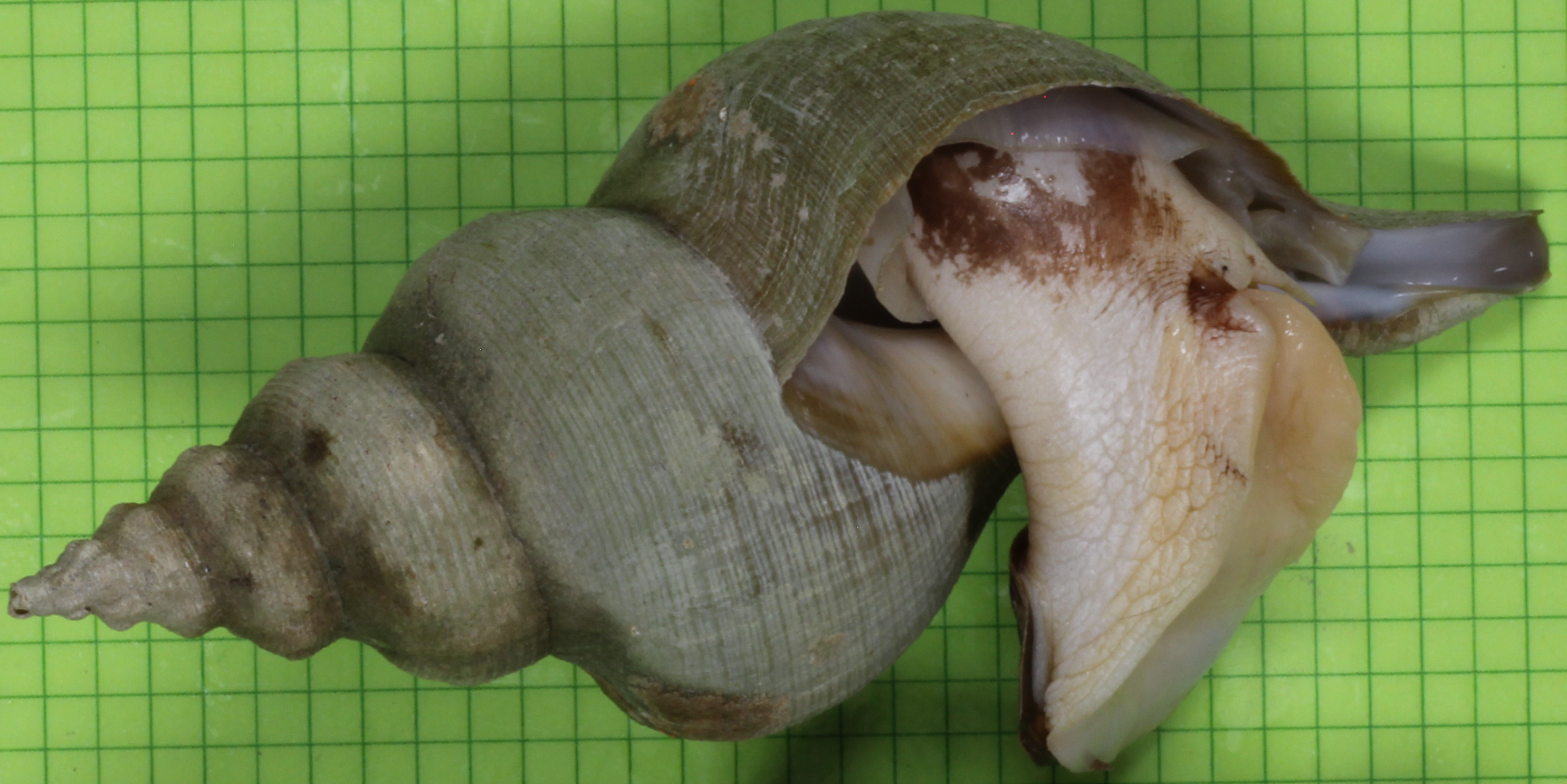|
Busyconinae
The Busyconinae are taxonomic subfamily of large sea snails, often known as whelks. The name "whelk" also refers to Buccinidae. Busyconinae consists of Recent and fossil species.Bouchet, P. (2015). Busyconinae Wade, 1917 (1867). In: MolluscaBase (2015). Accessed through: World Register of Marine Species at http://www.marinespecies.org/aphia.php?p=taxdetails&id=862828 on 2015-12-03 Genera * † '' Brachysycon'' Petuch, 1994 * '' Busycoarctum'' Hollister, 1958 * ''Busycon'' Röding, 1798 ** Tribe ''Busyconini'' Wade, 1917 ** Tribe ''Busycotypini'' Petuch, 1994 * † '' Coronafulgur'' Petuch, 2004 * † '' Laevisycon'' Petuch, R.F. Myers & Berschauer, 2015 * '' Lindafulgur'' Petuch, 2004 * † '' Pyruella'' Petuch, 1982 * ''Sinistrofulgur'' Hollister, 1958 * † '' Spinifulgur'' Petuch, 1994 * † '' Sycofulgur'' Marks, 1950 * † ''Sycopsis ''Sycopsis'' is a genus of plants in the family Hamamelidaceae native to southern central ChinaFlora of China via eFloras. Availabl ... [...More Info...] [...Related Items...] OR: [Wikipedia] [Google] [Baidu] |
Buccinidae
The Buccinidae are a very large and diverse taxonomic family of large sea snails, often known as whelks or true whelks.Bouchet, P.; Gofas, S. (2010). Buccinidae. In: Bouchet, P.; Gofas, S.; Rosenberg, G. (2010) World Marine Mollusca database. Accessed through: World Register of Marine Species at http://www.marinespecies.org/aphia.php?p=taxdetails&id=149 on 2010-12-30 The family includes more than 1500 species. Taxonomy The family Busyconidae was for a time treated as a subfamily of Buccinidae called Busyconinae. Genera ''Antillophos'', '' Engoniophos'', '' Phos'', ''Nassaria'', '' Tomlinia'', '' Anentome'' and '' ''Clea'''' were treated within family Buccinidae, but they were moved to Nassariidae in 2016. Habitat The true whelks occur worldwide in all seas from tropical oceans to the cold seas of the Arctic Ocean and the Southern Ocean. They are found from the intertidal to the bathypelagic zones. Most prefer a solid bottom, but some inhabit sandy substrates. Descri ... [...More Info...] [...Related Items...] OR: [Wikipedia] [Google] [Baidu] |
Sinistrofulgur
''Sinistrofulgur'' is a genus of large sea snails with left-handed shell-coiling, marine gastropod mollusk Mollusca is the second-largest phylum of invertebrate animals after the Arthropoda, the members of which are known as molluscs or mollusks (). Around 85,000 extant species of molluscs are recognized. The number of fossil species is es ...s in the subfamily Busyconinae. Species References * Hollister S.C. 1958, ''A review of the genus Busycon and its allies'' - Part I: Palaeontographica Americana IV(28): 48-126, pls. 8-18 * Petuch E.J., Myers R.F. & Berschauer D.P. (2015). ''The living and fossil Busycon whelks: Iconic mollusks of eastern North America''. San Diego Shell Club. viii + 195 pp. {{Taxonbar, from=Q22286347 Busyconinae Gastropod genera ... [...More Info...] [...Related Items...] OR: [Wikipedia] [Google] [Baidu] |
Busycon
''Busycon'' is a genus of very large edible sea snails in the subfamily Busyconinae. These snails are commonly known in the United States as '' whelks'' or ''Busycon whelks''. Less commonly they are loosely, and somewhat misleadingly, called "conchs".Bouchet, P. (2015). Busycon Röding, 1798. In: MolluscaBase (2015). Accessed through: World Register of Marine Species at http://www.marinespecies.org/aphia.php?p=taxdetails&id=160183 on 2015-12-03 ''Busycon'' comes from the Greek ''bousykon'' meaning ''large fig'', from ''bous'' meaning '' cow'' and ''sykon'' meaning '' fig''. Shell description Shells of species in this genus can grow to a length of 40 cm. They all have a long siphonal canal. The shells are generally a solid cream, light grey or tan in color, however the shell of the lightning whelk is marked with brown and white streaks. The shell of individuals can sometimes vary quite widely in coloration and sculpture. Behavior Busycon whelks are scavengers and ... [...More Info...] [...Related Items...] OR: [Wikipedia] [Google] [Baidu] |
Taxonomy (biology)
In biology, taxonomy () is the scientific study of naming, defining ( circumscribing) and classifying groups of biological organisms based on shared characteristics. Organisms are grouped into taxa (singular: taxon) and these groups are given a taxonomic rank; groups of a given rank can be aggregated to form a more inclusive group of higher rank, thus creating a taxonomic hierarchy. The principal ranks in modern use are domain, kingdom, phylum (''division'' is sometimes used in botany in place of ''phylum''), class, order, family, genus, and species. The Swedish botanist Carl Linnaeus is regarded as the founder of the current system of taxonomy, as he developed a ranked system known as Linnaean taxonomy for categorizing organisms and binomial nomenclature for naming organisms. With advances in the theory, data and analytical technology of biological systematics, the Linnaean system has transformed into a system of modern biological classification intended to reflect the ... [...More Info...] [...Related Items...] OR: [Wikipedia] [Google] [Baidu] |
Sycopsis (gastropod)
''Sycopsis'' is a genus of plants in the family Hamamelidaceae native to southern central ChinaFlora of China via eFloras. Available at: http://www.efloras.org/florataxon.aspx?flora_id=2&taxon_id=131962 ccessed 10/03/21/ref>Plants of the World Online. Available at: http://www.plantsoftheworldonline.org/taxon/urn:lsid:ipni.org:names:19617-1 ccessed 10/03/21/ref>RHS Plants. Available at: https://www.rhs.org.uk/Plants/17873/Sycopsis-sinensis/Details ccessed 10/03/21/ref> and Taiwan. Characteristics ''Sycopsis'' are evergreen or semi-evergreen shrubs or small trees. Their leaves are leathery and their flowers have no petals. Species The genus ''Sycopsis'' contains two species: '' Sycopsis sinensis'' and '' Sycopsis triplinerva''. Etymology and naming ''Sycopsis'' is derived from Greek and means ‘fig-resembler’ because the person who named the genus, Daniel Oliver, thought its appearance resembled a shrubby ''Ficus ''Ficus'' ( or ) is a genus of about 850 species of wood ... [...More Info...] [...Related Items...] OR: [Wikipedia] [Google] [Baidu] |
Subfamily (biology)
In biological classification, a subfamily (Latin: ', plural ') is an auxiliary (intermediate) taxonomic rank, next below family but more inclusive than genus. Standard nomenclature rules end subfamily botanical names with "-oideae", and zoological names with "-inae". See also * International Code of Nomenclature for algae, fungi, and plants The ''International Code of Nomenclature for algae, fungi, and plants'' (ICN) is the set of rules and recommendations dealing with the formal botanical names that are given to plants, fungi and a few other groups of organisms, all those "trad ... * International Code of Zoological Nomenclature * Rank (botany) * Rank (zoology) Sources {{biology-stub ... [...More Info...] [...Related Items...] OR: [Wikipedia] [Google] [Baidu] |

